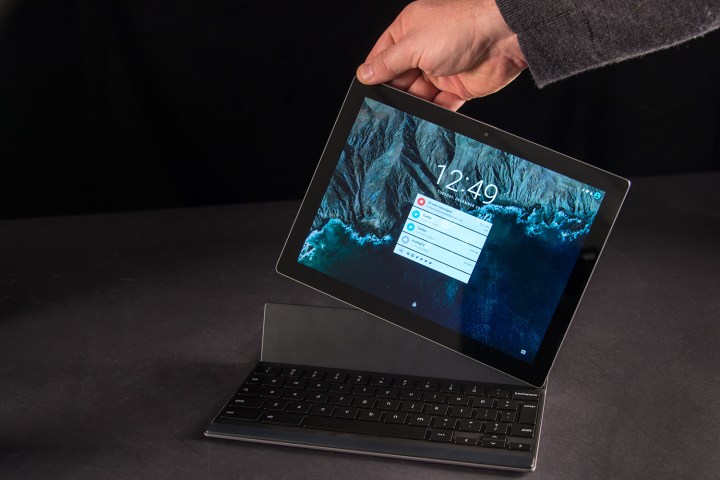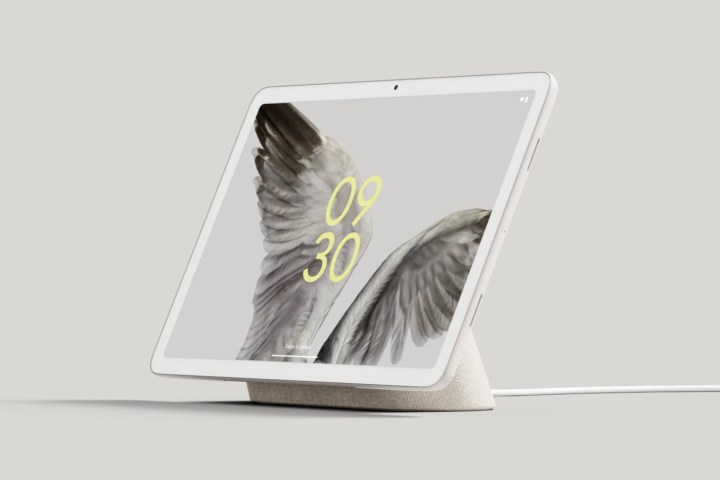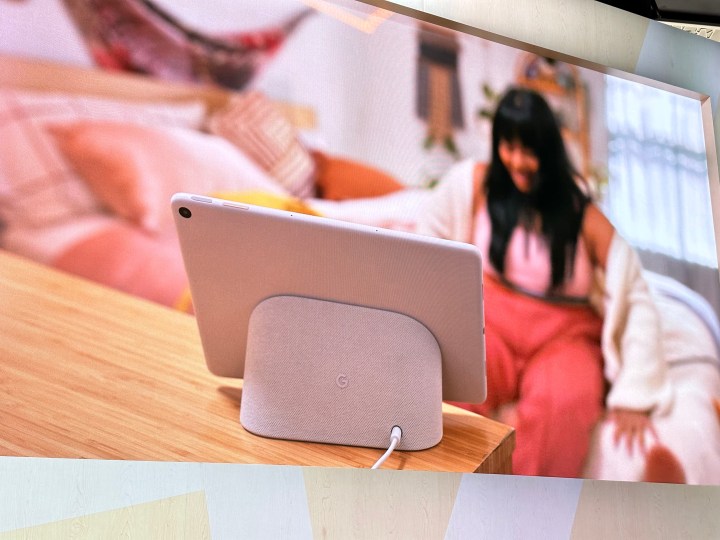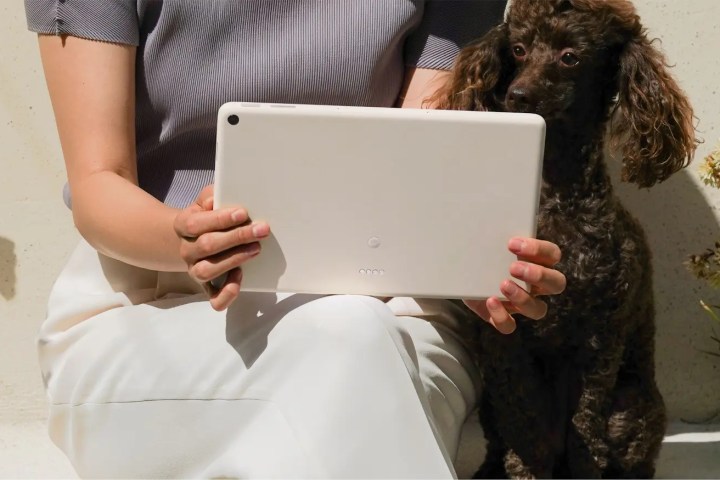Google is bringing a strange new addition to its Pixel line of products next year: an Android tablet. Though the company has been building up to a Pixel Watch for years with back-to-back acquisitions, the Pixel Tablet seemingly came out of nowhere when it was initially teased at Google I/O in May. And during Google’s hardware event for the Pixel 7, we got an even better glimpse at it.
Although the Android tablet niche is one that’s struggled for a while, Google is taking an interesting approach with the Pixel Tablet. In addition to functioning as a “normal” tablet, Google is also positioning the Pixel Tablet as a dashboard for its ecosystem of smart home appliances. Google’s recent history with large-screen devices is nothing short of a mess, leading me to believe the Pixel Tablet is destined for failure. But it’s also a bad idea that just might work.
A quick primer on Google Pixel tablets and computers

The last Android tablet Google sold was in 2015. Called the Pixel C, it featured some experimental hardware and was almost certainly ahead of its time. It failed both commercially and critically. Google discontinued it in 2017, and a year later, in late 2018, the company unveiled the Pixel Slate — a two-in-one Chrome OS device.
In mid-2019, Google announced it was done making in-house tablets and even canceled two unreleased products. That was also the end of the similarly unsuccessful Pixel Slate.
“Google’s hardware team will be solely focused on building [ChromeOS] laptops moving forward,” tweeted Google’s hardware chief, Rick Osterloh, at the time.

In the subsequent years, there was little development in the Android tablet space, and Google appeared to have shifted its resources to Chrome OS with a series of major updates and laptops like the Pixelbook Go. Then in 2021, Google restarted work on Android for tablets — launching a new home screen experience for big screens. It also unveiled Android 12L, a special version of Android 12 made just for foldables and tablets.
In early 2022, Google quietly began assembling a team for Android tablets, roping in notable figures like one of Android’s original founders, Rich Miner. All of this brings us to this year’s Google I/O conference, where the company first previewed the Pixel Tablet. And a few months later, Google went full circle by shelving the Pixelbook division.
Will Google commit to the Pixel Tablet for good?

Google is infamous for not taking long to dump products when they don’t work out. So why did it bother to return to Android tablets?
Other than offering a high-end experience for Android, Google’s products are meant to serve as inspiration for other manufacturers and keep the segment competitive instead of consolidating in the hands of a few like Samsung. Chrome OS, as a market, has vastly evolved and matured, however, and there’s an argument to be made that it no longer needs Google to show other companies the way. Still, Android tablets have faltered in the absence of attention from Google, and Apple now accounts for nearly half of all tablet shipments.
This is also an opportunity for Google to further promote its in-house Tensor G2 chipset, the same one powering the Pixel 7 and Pixel 7 Pro.
The Pixel Tablet looks the part too. It doesn’t have any radical attributes like the iPad Pro’s computer-grade processor, nor does Google expect you to get work done on it. Without the Google logo, you’d be even hard-pressed to tell it apart from a generic Android tablet design. It has a sufficiently large 10-inch screen with thick bezels, a camera on the front, another camera on the back, stylus support, and the Tensor G2 chip. It’s a tablet in a more traditional sense: a pragmatic stay-at-home device for watching movies on the couch or doodling on documents … except for those pins on the back.
Why the Pixel Tablet might actually work

Like almost every Google product, the Pixel Tablet is aimed at roping its users into the company’s broader ecosystem of services (and in this case specifically, a Google-compatible smart home). Those pins allow you to plop the Pixel Tablet on a wireless charging dock that instantly turns it into a Nest Hub. Once docked, you can use it as a dashboard from where you can control all your smart appliances, an always-on photo frame that shuffles through your Google Photos library, a videoconference hub, and more.
It’s the sort of concept that Amazon and its Alexa partners like Lenovo already offer, and there’s a decent chance the Pixel Tablet will serve as a blueprint for third-party Android manufacturers to follow.

Considering the rest of the Pixel lineup’s competitive pricing, the Pixel Tablet will likely take on Apple’s entry-level iPad and undercut it. So far, it looks like a dependable Android tablet with a processor that will promise buyers years of smooth performance and updates. But with the smart home dock, the Pixel Tablet will, most importantly, appeal to those invested in Google’s smart home ecosystem. And for those people, the Pixel Tablet is far more versatile than dedicated hubs like the Nest Hub Max.
If Google doesn’t delay it too much and plays its card right, the Pixel Tablet might just work. Whether Google’s inconsistent record with in-house tablets and computers will hinder its success, though, remains to be seen. At the very least, there’s an interesting idea here that I want to see more of.
